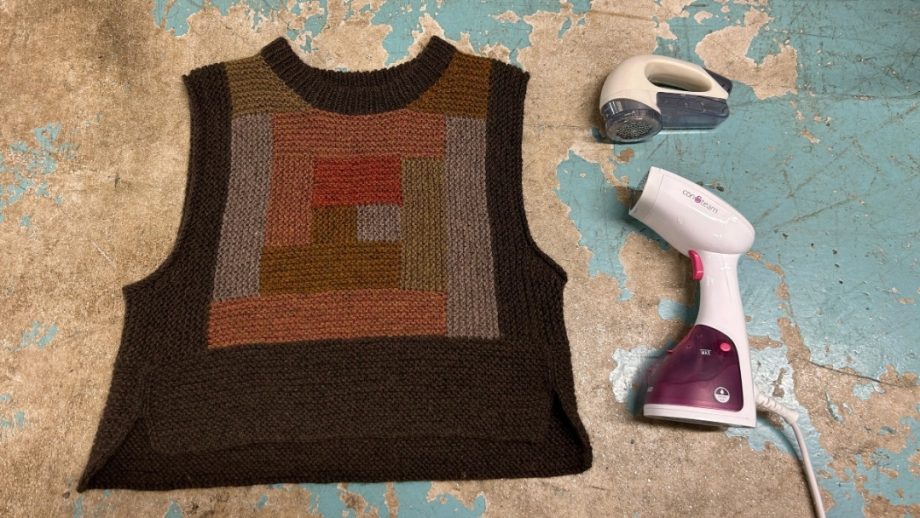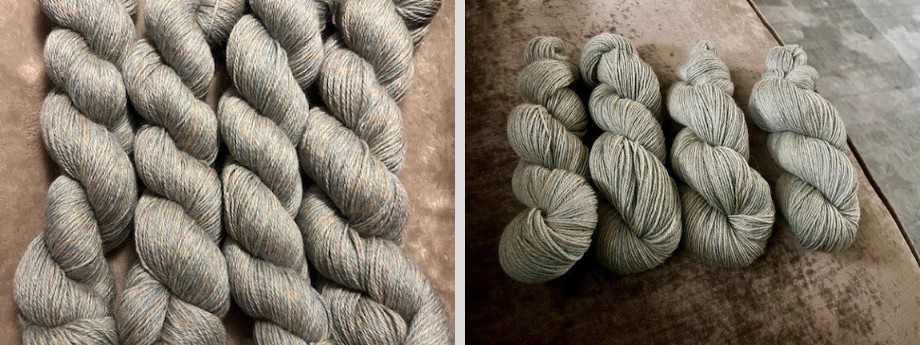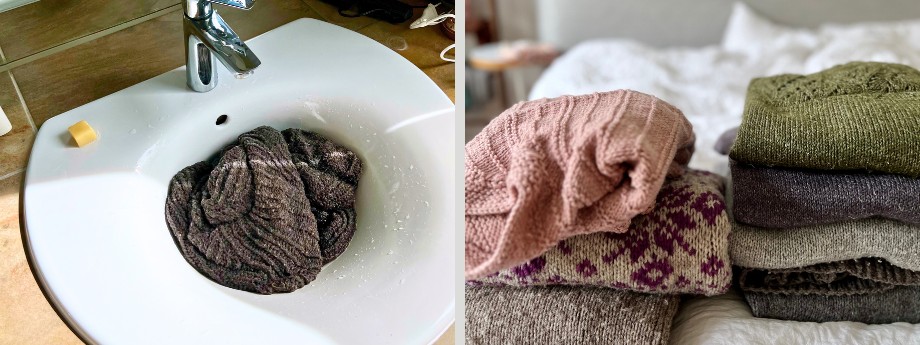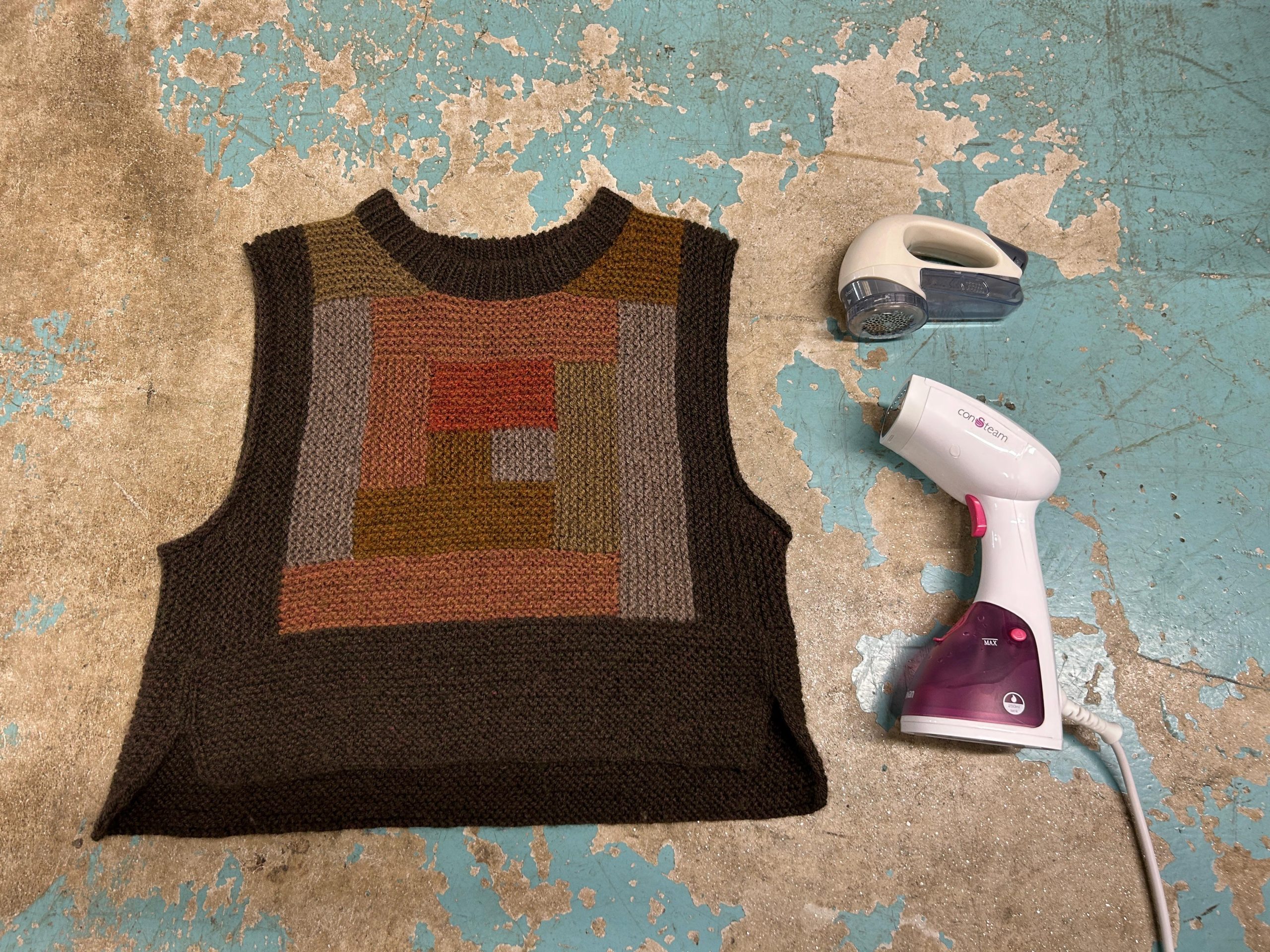How to Care for Your Woollens

While we love the process of knitting up a soon-to-become-a-favourite garment or spinning a delightful bobbin of fluff, we also really enjoy taking good care of our knits or handspun items. After all, we’re in this making journey to create things that will last us years, if not decades. Even if they’re not our style anymore or we prefer a different fit, they can move on to the next pair of loving hands. Imperative for this to work, though, is to take good care of our woollens – and for pieces created out of our yarns, this starts even before knitting!
Why it’s a good idea to wash our yarn before knitting with it
When you hold a skein of our yarns in your hand, you might be surprised at how thin it looks. This is because we don’t do any washing or conditioning after the yarns are spun and skeined. We recommend that you wash your skeins gently before starting to knit with them – they will plump up after a gentle hand wash. This also helps when you’re knitting your swatches as it’ll give you a more accurate gauge than swatching with skeins that have not been washed.

Left: Skeins before washing | Right: Skeins after washing (Both Yarnadelic Sport)
Blocking and hand-washing your knits
After you’ve finished your project, it’s a good idea to block it. This will help open up the fabric and fill in any gaps between stitches – especially with yarns like ours that really likes to bloom! For certain stitch patterns like lace and cables blocking is crucial to make them shine.
To block your finished item, fill a basin or sink with cool water and a little wool wash if you like, and submerge your piece until it’s properly soaked. I like to leave mine in for at least half an hour, and I’ve also been known to forget about a knit in our sink, so it’s not unheard of a finished piece being soaked overnight in our household (no worries, that doesn’t do any harm!). You want to avoid letting running water touch your fabric directly as this might lead to felting on the spot where the water stream has met the fabric, so it’s best to fill your basin or sink first and then put in your knitted piece.
Then, take out your item and gently squeeze out the water. No wringing here, just gentle squeezes, as wringing the fabric can, again, cause felting. Usually at this stage, the knit is still pretty wet, so I like to take a large towel, spread the knitted item onto it and then roll it up like a burrito. Then, I proceed to stomp around on the roll which will promptly start soaking up all the water from the knitted piece. Open up the towel and take our your hand knit – and it should be significantly less wet than before!
Now, you want to lay out your piece to dry flat. You can do so on proper blocking mats, but a thick towel or two will also suffice! If you like, you can use blocking pins or regular sewing pins to pin down the edges of your knit. This is especially helpful to open up lace patterns – I usually don’t bother with them for any other patterns than lace. Gently stretch the piece into the shape you’d like it to have and then just leave it to dry!
Hand-washing your knits after you’ve worn them is no different than blocking. The good thing about woollens is, though, that they need significantly less washing than other non-wool items as wool has antibacterial and moisture-wicking properties. This means it doesn’t start to smell easily! Often, a bit of airing out already helps to get rid of cooking smells or the like. If you really do want to wash your knits, simply follow the steps described above.
With the exception of Exmoor Sock, all our yarns are non-superwash yarns, which means that we highly recommend hand washing them. Socks and other items knit out of Exmoor Sock can be washed in the washing machine on a wool cycle, but pieces knit out of any of our other yarns should be hand washed.

Seasonal TLC: De-pilling and storing your knits for the summer
Every once in a while, our beloved woollens need a little bit of TLC (Tender Love and Care). The ideal moment to make that happen is when the cold weather has properly disappeared and you know you won’t be needing your thick knits anymore – but really, you can give them a little de-pill any time of the year if you like!
Items knit out of wool often do pill – that’s just part of the process of working with natural fibres. There are fibres that are more prone to pilling, like Merino or Polwarth, and fibres that are less likely to do so, like the lovely rustic Devon Closewool. Whether or not a garment pills also depends on how close-fitting to the body it is and how much friction it experiences at certain points! Under the arms is a classic spot for items to pill, as is at the side of the body where the sleeve touches the body. Accessories like shawls or hats are a little less likely to pill, but might also benefit from a little de-pilling every once in a while to help them shine again.
There are a lot of tools that help with de-pilling: Pilling combs have a rough texture at the bottom that helps remove the little pills from fabric while fabric shavers employ batteries and literally shave away the pills. An in-between is the Gleener – with a handle akin to a shaver, but without a battery, it uses sandpaper-like inserts that stick to the fabric pills and remove them.

Sonja’s Walled Garden Vest with a fabric shaver and steamer – great tools for caring for your woollens
To de-pill your knit, lay it out flat and gently move over the spots that have pilled with your de-pilling tool. It might take a few rounds to get rid of all the little fabric nobs. Afterwards, hand washing your knit will help the fabric bloom again.
If you want to put away your knits for the summer, de-pilling and hand washing them are great first steps! This means you’ll be taking fresh, ready-to-wear woollens out of storage when the first cold spell hits. To store your precious hand knits, make sure to pick a dry, moth-free place (you can add some lavender sachets or cedar wood pieces in between the knits). A good option if you’re short on space or want to make extra sure no little creatures get access to your knits is to pack them in sealable vacuum plastic bags. Those work with any old vacuum cleaner! When you take them out of their vacuum-pack bag, shaking them out and steam blocking with a steam iron or steamer is a good idea as they are usually a little crumpled up.
All of these tips and tricks – from washing your skeins before knitting with them, blocking and hand washing to de-pilling and storing – will help make sure that your woollens will last and that you’ll be happily wearing them for years!